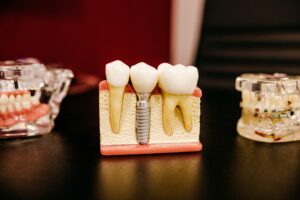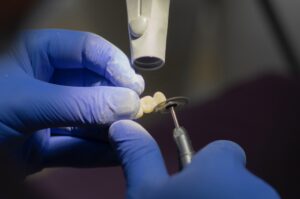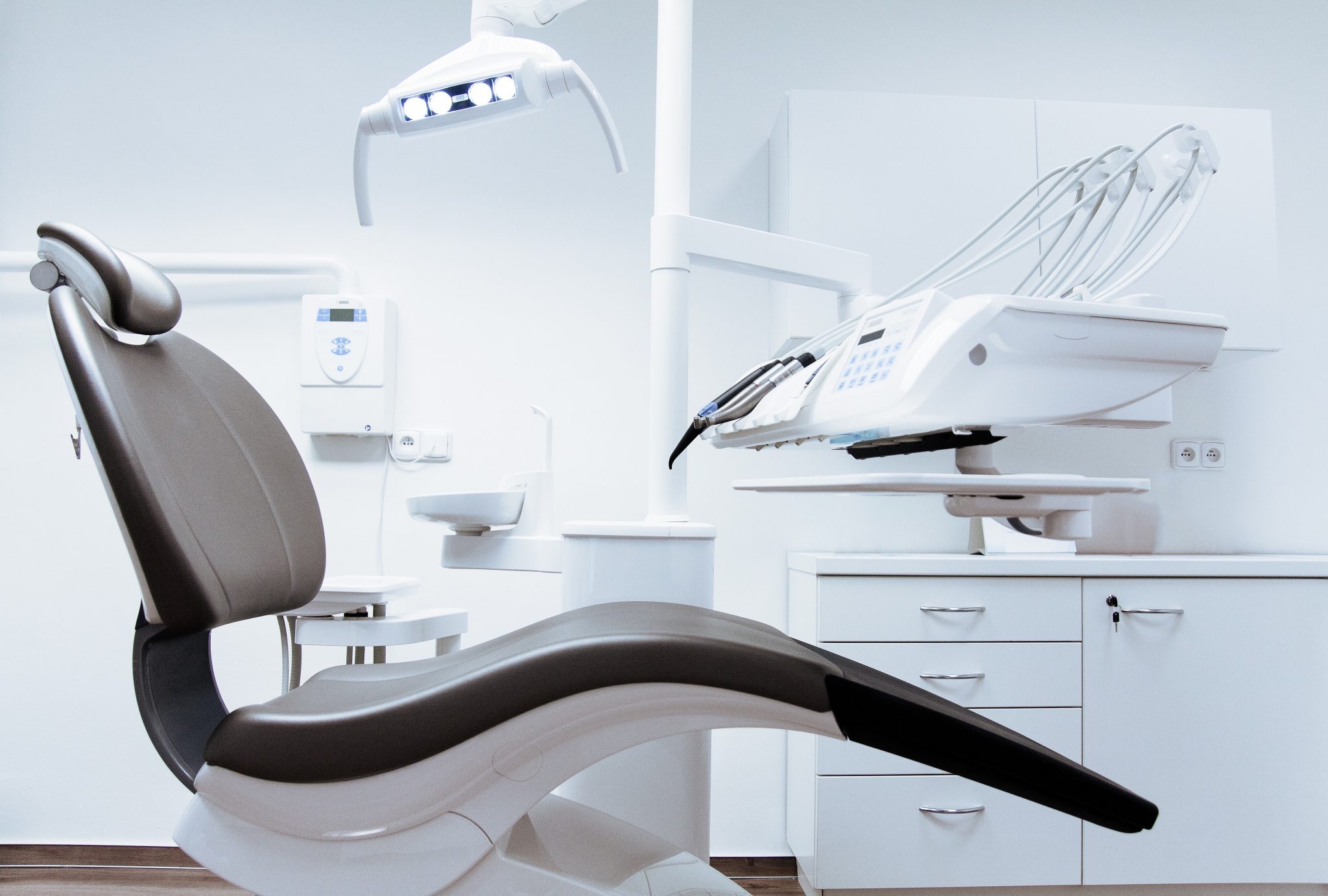Best Dental Implants in Monroe, LA: A Guide



Best Dental Implants in Monroe, LA: A Guide
Dental implants offer a modern solution for individuals facing tooth loss, providing a stable and long-lasting option to replace missing teeth. In Monroe, LA, patients can access this advanced dental technology to restore their smiles and improve oral health. Unlike traditional dentures or bridges, dental implants serve as a reliable foundation for a replacement tooth, closely mimicking the function and appearance of natural teeth. An implant consists of a titanium post surgically placed into the jawbone, where it integrates over time through a process known as osseointegration. This creates a secure anchor for the attachment of a crown, which is custom-made to blend seamlessly with the patient’s remaining natural teeth. The implantation process not only addresses the aesthetic concerns associated with tooth loss but also preserves the structural integrity of the jawbone, preventing the deterioration that often follows when teeth are missing. For those in Monroe, LA, or the surrounding area considering dental implants, it is essential to consult with a qualified dental professional (i.e., Dr. Anzalone) to assess their oral health and determine the most appropriate treatment plan. Dental implants represent a significant advancement in dental care, offering a durable and discreet solution for tooth replacement that can bolster self-confidence and promote a healthier lifestyle.Understanding Dental Implants


Basics of Dental Implants
Dental implants consist of titanium posts surgically placed into the jawbone, acting as artificial roots. Over time, these implants fuse with the bone in a process called osseointegration, providing stable support for artificial teeth such as crowns, bridges, or dentures.Benefits of Implants Over Other Solutions
Implants offer numerous advantages:- Durability: Titanium implants are robust and are designed to last many years, often a lifetime, with proper care.
- Aesthetics: They provide a natural look by closely resembling real teeth, both in appearance and function.
- Bone Preservation: By stimulating bone growth, implants prevent the bone loss that typically occurs after tooth loss.
- Improved Function: Implants restore biting and chewing abilities and do not slip or move, unlike traditional dentures.
Ideal Candidates for Dental Implants
When considering dental implants, determining if a patient is an ideal candidate involves assessing bone density, gum health, and evaluating certain health conditions. Individuals with certain characteristics are better suited for this type of dental procedure.Evaluating Bone Density and Gum Health
A key requirement for dental implant success is adequate bone density in the jaw. The jaw bone must have enough strength to support the implant. Bone loss can be a disqualifying factor; however, some candidates may become eligible through bone grafting procedures. Healthy gum tissue is equally important. The gums must be free from periodontal disease as healthy gums provide the necessary support for the implant, ensuring its stability and longevity.Who Should Consider Dental Implants
Candidates for dental implants typically include those with one or more missing teeth who are looking for a permanent and durable replacement. Individuals with healthy teeth adjacent to the gap may also be good candidates, as implants do not rely on neighboring teeth for support. People with stable health conditions that do not impact bone healing or increase the risk of infection are suitable candidates. Chronic diseases, such as uncontrolled diabetes, may affect the healing process and require additional evaluation. Candidates should commit to maintaining oral hygiene, as proper care extends the life of the implant and preserves the remaining natural teeth. Those considering dental implants should discuss the procedure, benefits, and risks with a dental specialist to ensure it is the right choice for their dental health.The Dental Implant Procedure
#1. Initial Consultation and Planning
During the initial visit, a detailed assessment is made to create a thorough treatment plan. Patients undergo imaging, such as X-rays or CT scans, to evaluate the condition of the natural bone and to determine the precise location of the dental implant. The plan also includes considering any need for bone grafting and setting a timeline for the healing process.#2. Surgical Placement of the Implant
The first step in the surgical phase is administering a local anesthetic to ensure patient comfort. A small incision is made in the gum tissue to access the jawbone, where the dental implant screw will be placed. The screw must be positioned accurately to ensure the stability and longevity of the implant. For those patients who have dental anxiety, Dr. Anzalone offers IV sedation with an in-house anesthesia nurse to sleep through the procedure.#3. Post-Surgical Care and Healing
After dental implant placement, patients receive care instructions to support the healing period. This phase is critical for the integration of the implant with the natural bone, a process that can take several months. Patients are monitored regularly to check their progress and ensure the healing process is on track.#4. Attaching the Dental Crown or Bridge
Once the implant has integrated with the jawbone, an abutment is attached to hold the dental crown or bridge. This final component is custom-made to match the patient’s natural teeth and to restore functionality. The successful attachment completes the dental implant treatment cycle, providing a durable and long-lasting tooth replacement. This final step is performed by your general dentist.Types of Dental Prosthetics
Dental prosthetics are essential for restoring function and aesthetics after tooth loss. They come in various forms, each tailored to meet specific patient needs. The following subsections categorize the main types of dental prosthetics used in modern dentistry.Crowns and Bridges


Dentures and Partial Dentures
Full Dentures: Full dentures are a complete set of artificial teeth for patients who have lost all their natural teeth. These prosthetics sit on top of the gums and can be removed for cleaning. Partial Dentures: For patients missing only some teeth, partial dentures are used. These consist of replacement teeth attached to a gum-colored plastic base connected by a metal framework that holds the denture in place in the mouth. Implant-Supported Dentures: Combining implants with dentures, implant-supported dentures provide improved stability. These dentures clip onto supports on dental implants embedded in the jawbone, offering a secure fit that helps with chewing and speaking.Long-Term Care and Maintenance
Maintaining dental implants involves a commitment to proper care and regular dental visits. Ensuring the longevity of dental implants is grounded in good oral hygiene and the management of daily activities that might affect them.Daily Oral Hygiene for Dental Implants
Good oral hygiene is crucial for the success of dental implants. Patients should brush their implants at least twice a day using a soft-bristled toothbrush and a non-abrasive toothpaste to avoid scratching the surface. Interdental brushes or floss specifically designed for implants can help to clean the hard-to-reach areas around the implant. Additionally, using an antimicrobial mouthwash can assist in reducing the bacteria around implants.- Brushing:
- Use a soft-bristled toothbrush.
- Employ a non-abrasive toothpaste.
- Flossing:
- Utilize floss that’s specific for dental implants.
- Clean around the implant with gentle motions.
- Mouthwash:
- Rinse with an antimicrobial solution.
When to Contact Your Dentist
Patients should contact their dentist immediately if they experience any discomfort, swelling, or difficulty with daily activities such as chewing, which may indicate an issue with the implant. It is also important to report any signs of infection, such as redness or persistent bad taste, as these could suggest peri-implant disease which requires immediate attention.- Discomfort or Swelling:
- Could indicate an issue with the implant’s integrity or infection.
- Difficulty with Daily Activities:
- Problems with chewing or changes in bite may signal needed adjustments.
- Signs of Infection:
- Redness, bad taste, or persistent bad breath should prompt an immediate call to the dentist.
Latest Technological Advancements
The field of dental implants has seen significant technological progress, enhancing patient outcomes and the efficiency of treatments. Digital x-rays stand at the forefront, allowing for high-resolution images that assist dental professionals in planning implant placement with precision. This technology reduces radiation exposure and provides immediate results. Advances in biocompatible materials mean current dental implants integrate better with human bone. They are constructed using materials like titanium and zirconia that are known for their strength and compatibility with body tissues, reducing the risk of rejection and fostering a higher success rate of the implant. To ensure a comfortable fit, computer-aided design (CAD) and computer-aided manufacturing (CAM) are now commonly used. They facilitate the creation of implants that match the specific contours of a patient’s mouth and provide a tailored fit, which is essential for the long-term comfort and function of dental implants. Minimally invasive techniques coupled with advanced imaging have made it possible to place implants with minimal discomfort, often leading to an effective solution for tooth loss with less recovery time. It’s these innovations that contribute to the implants’ functional longevity.| Technology | Benefit |
|---|---|
| Digital X-rays | Reduced radiation, Higher clarity, Instant feedback |
| Biocompatible Materials | Enhanced integration, Lower rejection rate |
| CAD/CAM | Customized design, Precise fit |

